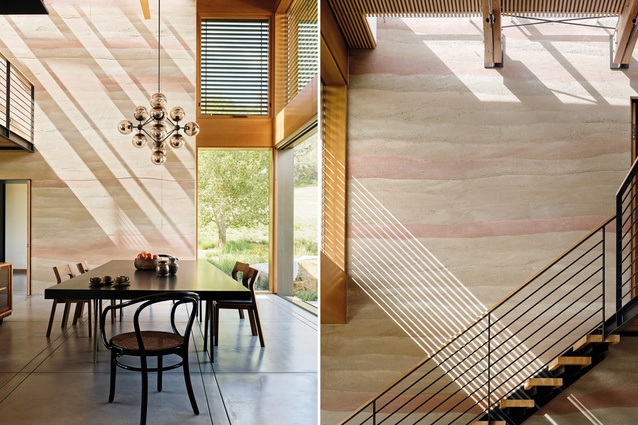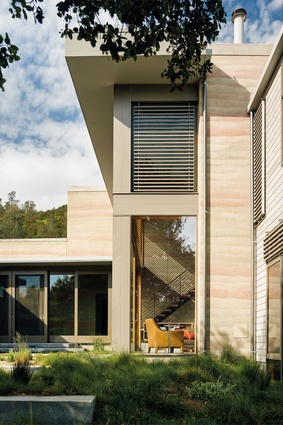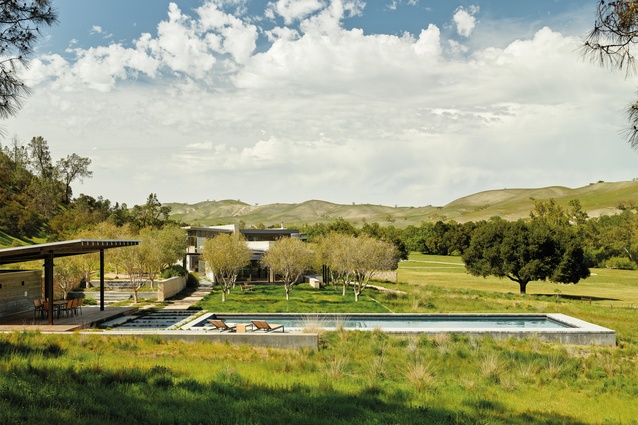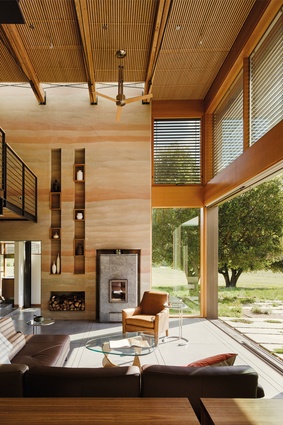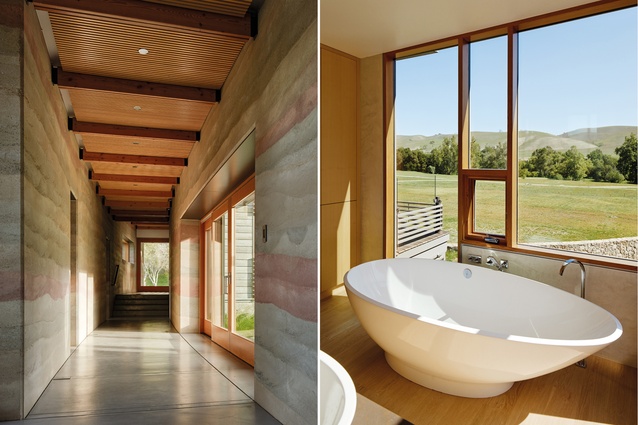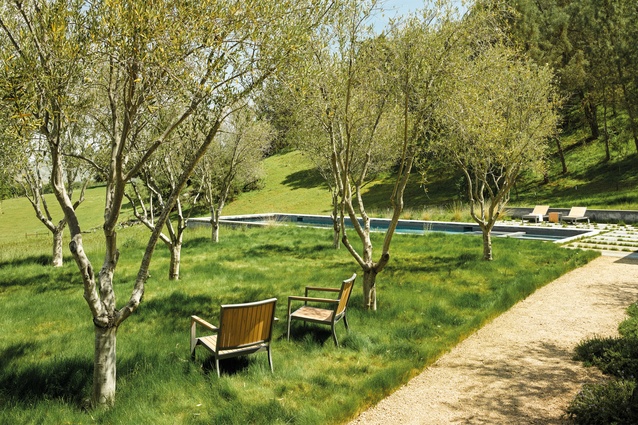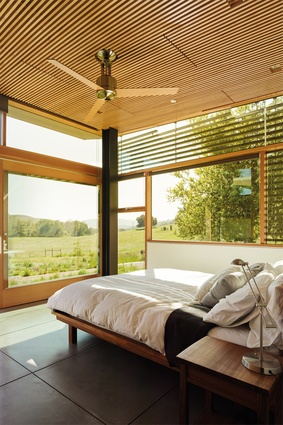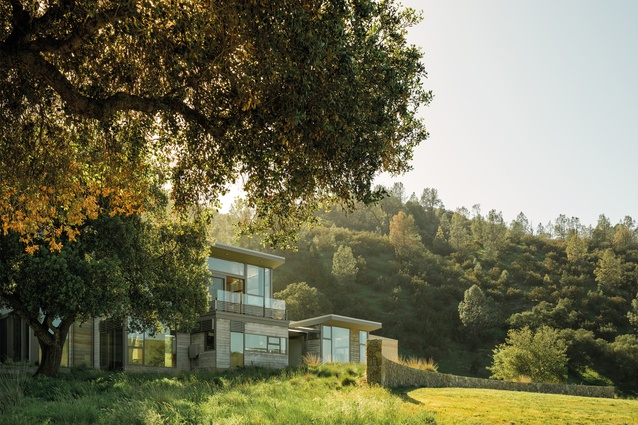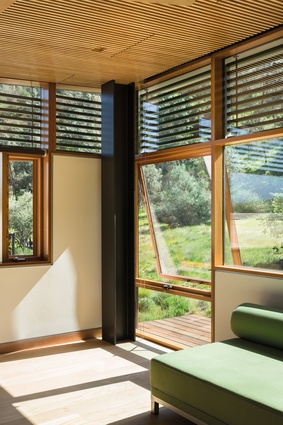Of the earth: Californian retreat
Located on a 200-hectare property encompassing a thriving walnut orchard, this family escape treads lightly on the earth from which it has been built.
This family retreat stands on an old ranch property covering 200 hectares of farmland and hills in Central Valley, California. An expansive central living area forms a meeting space for extended family, with private guest suites linked to the house via catwalks. For the owners of the property, it was important that anything they build on this beautiful plot of land operates without detriment to the wider environment.
This led them to approach Feldman Architecture, a San Francisco firm which has a reputation for creating modern architecture that follows sustainable building and design practices. “For these clients, we toured them on a few projects and they honed in on rammed earth for aesthetic reasons as well as for the environmental story and the thermal mass it could provide to help with achieving this very energy-efficient design,” says architect Jonathan Feldman.
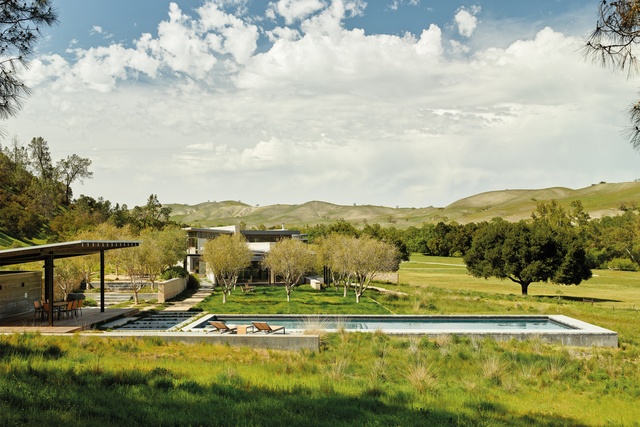
Aside from the striated colours and milky texture provided by the walls, the material also stabilises the temperature of the house: important in this environment, which can be very hot in summer and also cold in the winter. Used with carefully placed glazing and shading, the walls become a solar absorber that can release or store thermal energy.
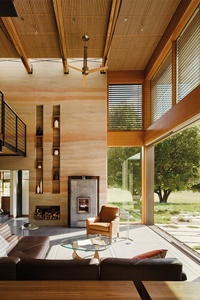
Aesthetically, designing around rammed-earth walls can be challenging as the colour palette is already set; however, for this house, the exact tones of the walls were altered slightly to fit the clients’ desires. “We imported these dark-red stripes from some soil off site because the clients wanted more contrast and richness. We also mixed in different cement – white or grey that will change the tone of the rammed earth. So, it was like a chemistry project where we came up with these different colours and composed how much drama to put into the walls.”
From there, the colour palette of the other materials in the house came from the tones in the walls. The architects avoided blues and stuck mostly to a warm palette of timbers and concrete. Some of the floors are oak, the window trims Douglas fir, and the ceiling is cedar with a whitewash stain, which gives it a muted look.
The slats in the ceiling provide texture and also hide lighting tracks, acoustic treatments and sprinkler heads. Exposed trusses connect the oak ceiling to the walls and allow light to penetrate around the periphery of this double-height room.
“This creates a play of light and shadow. We also wanted to get warmth on the walls for heating and to bounce light in the room, but to control glare and avoid having too much heat in the summer. There are slats over a fair number of the windows to soften and create that visual texture,” says Feldman.
The linear nature of the ceilings, along with the slatted window treatments and the prominent slant of the stair balustrade, provide contrast with the softness of the striations in the walls. Iron columns branch out from the floor to the ceiling. “This meant we could have fewer columns, and there is also something playful and elegant about looking out the window and seeing oaks and having this sculptural version of a tree inside,” says Feldman.
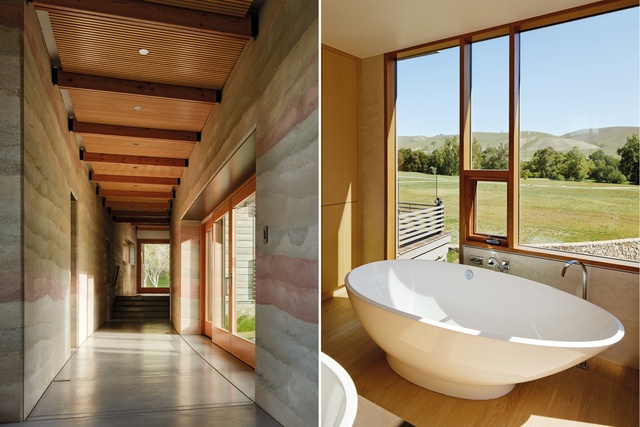
Outside, the pool area is a huge drawcard in the Californian summer so Feldman worked with landscape architects, Bernard Trainor + Associates, to give the pool a different aspect from that of the house. “We wanted to pull the pool away from the house to make it a destination and to bring you out in the meadow with a slightly different view,” says Feldman. “The landscape architect extended a stone wall out towards the pool and this was a key move for opening it up and making it feel really spacious.”
The house, which was built by local contractors Stocker & Allaire, achieved LEED Gold Certification. Aside from the sustainability benefits gained by the walls, geothermal earth tubes cool the house in the summer and heat the water in the winter, and solar thermal and photovoltaic arrays power the net-zero home. For the homeowners, this is a beautiful, private retreat, which leaves them with a clean conscience.

